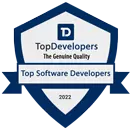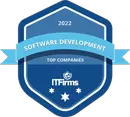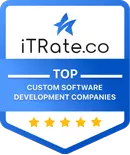Barriers and Guidelines to Adopting Wearables in Sports
December 21, 2022
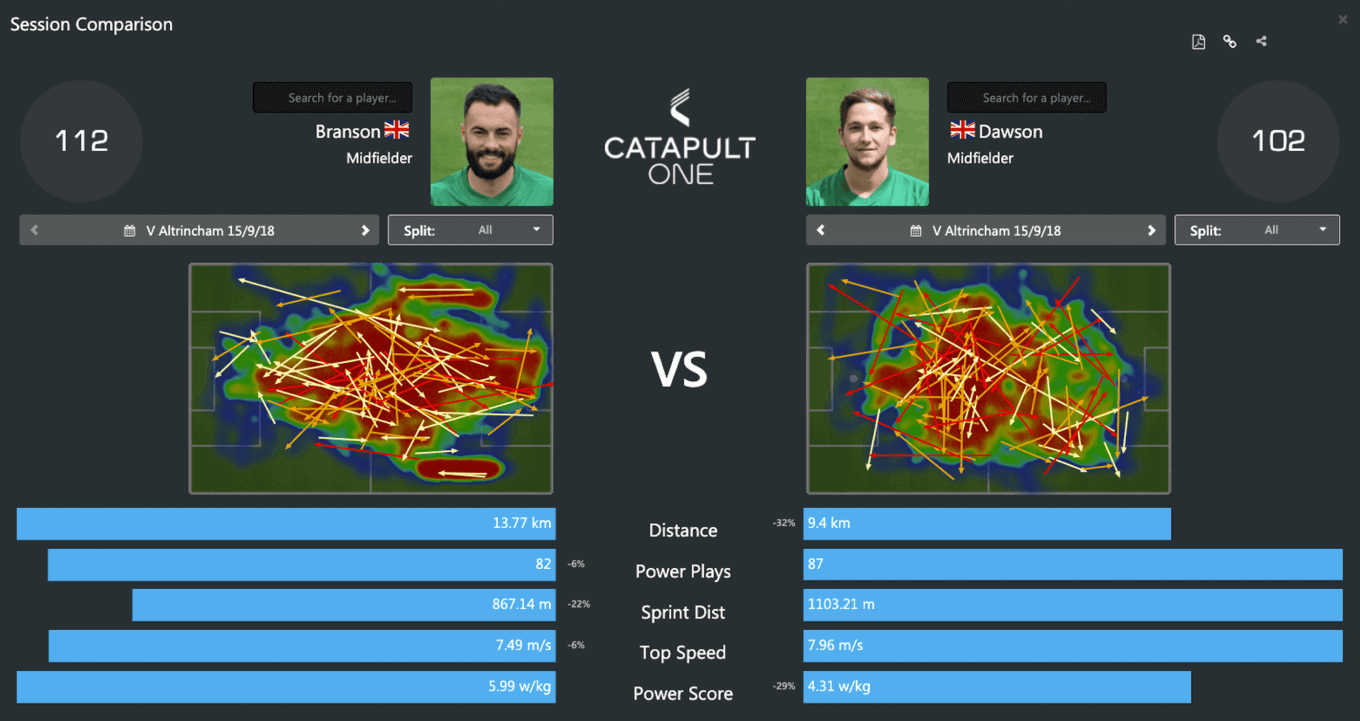
Athletes can rely on sensors to assess performance, but device adoption comes with technical and compliance challenges.
The sports wearable landscape
With the speed of a sprinter and the strength of a boxer, innovations are impacting every facet of the sports business. According to a survey by PwC, 69.7% of the respondents mentioned that the technologies augmenting physical activities represent a key market force in the industry. Furthermore, innovations positively impact both the athlete and fan experience.
One of the major tech trends in this regard, however, is the rising adoption of sports wearables in combination with health or fitness apps, as reported by McKinsey (2021). As the name suggests, these devices can be worn by amateurs or professional players to track relevant metrics, facilitating training and ensuring athlete welfare.
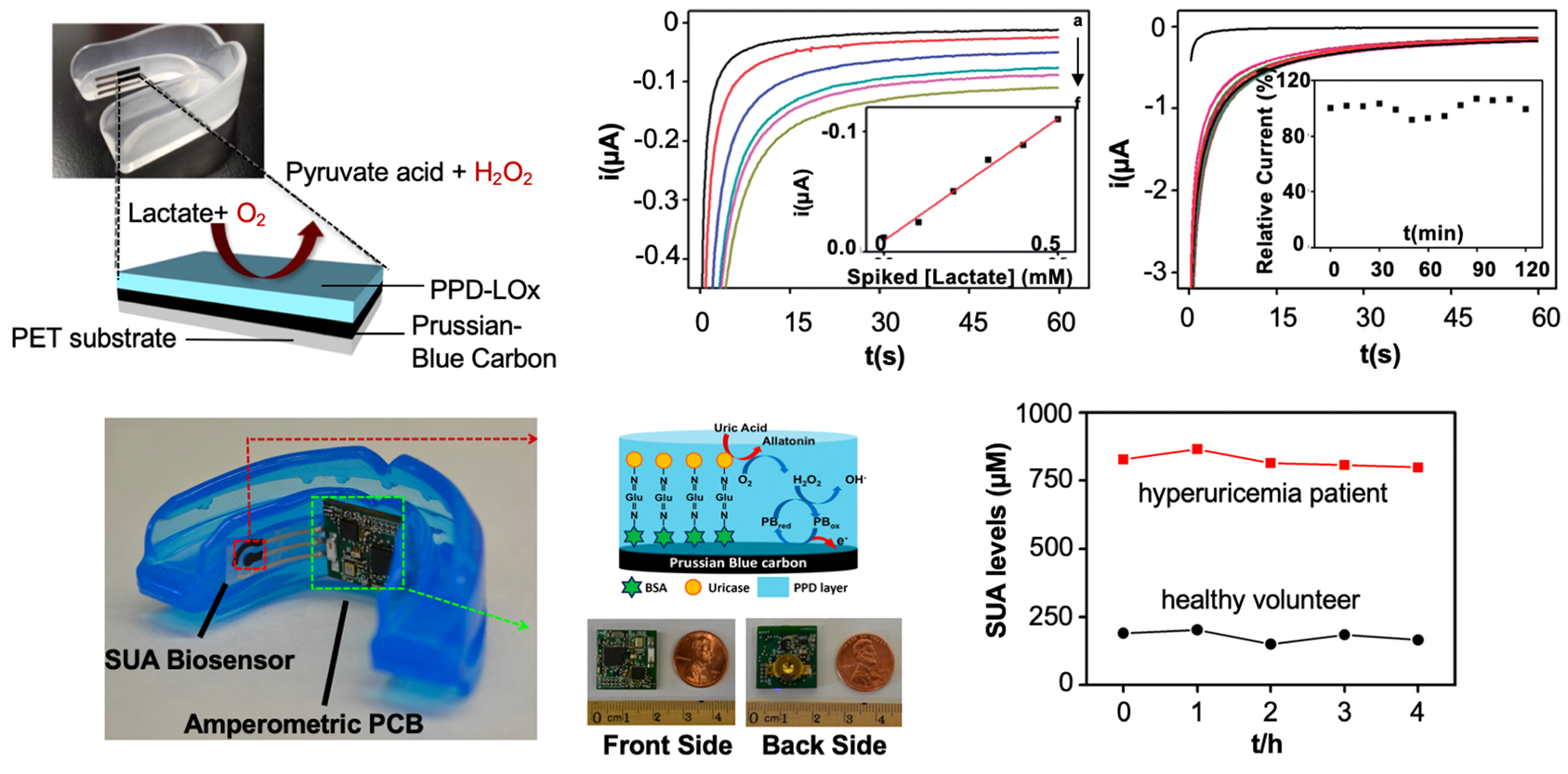 A salivary sensor for athletes’ biochemical monitoring (source: Nature)
A salivary sensor for athletes’ biochemical monitoring (source: Nature)Studies prove the superiority of a data-driven approach to athlete training unlocked by sports wearables compared to traditional coaching. In particular, the National Center for Biotechnology Information reported that wearable-based vibratory feedback helped to increase the swimming stroke rate. The wearable technology in sports can also facilitate the assessment of athletes’ psychological state. For instance, the universities of Lapland and Istanbul delivered a machine learning–based system, helping coaches to assess the stress level of players with 85% accuracy.
As you can understand from the example above, sports wearables are just the tip of the iceberg. We may see them as the eyes and ears of complex systems that encompass multiple technologies, such as the Internet of Things (IoT) and machine learning (ML). Deloitte describes a multilayered architecture of such platforms as follows:
- Sensors integrated into athletes’ clothing and accessories to collect biometric data
- A network layer to transmit this data via gateways and communication protocols
- An integration layer to aggregate and store information, including an IoT middleware and a data storage
- A data analytics module to process information and turn it into actionable insight
- Dashboards to visualize the insights in an intuitive format
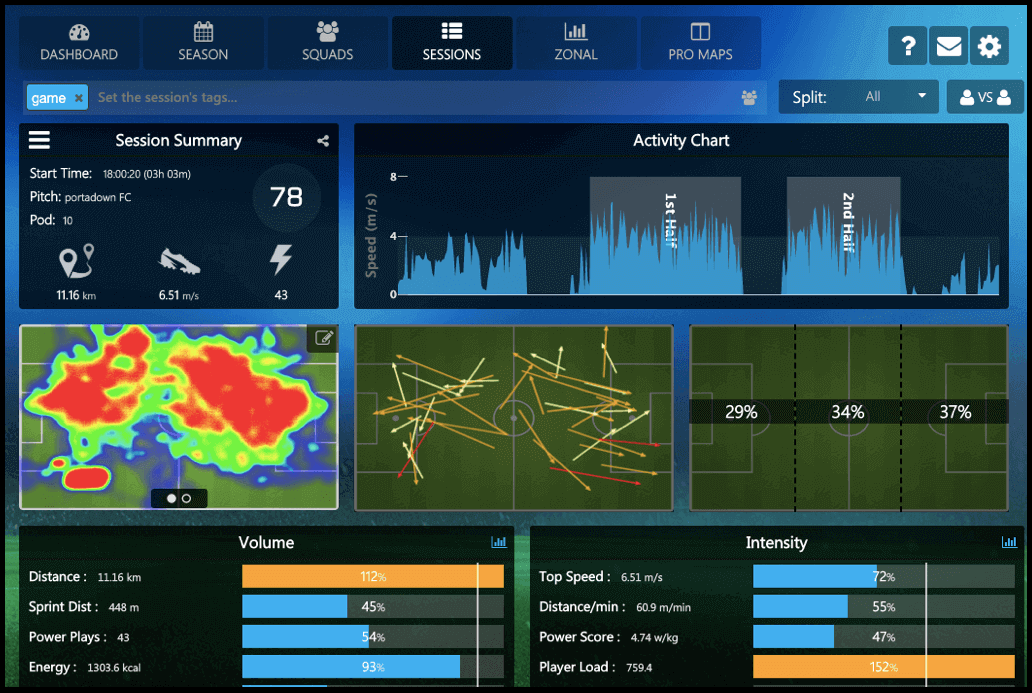 An example of a dashboard connected to sports wearables (source: Catapult)
An example of a dashboard connected to sports wearables (source: Catapult)Examples of the wearable technology in sports
Sports wearables can take many forms: smart watches and swim goggles, GPS-tracking vests, connected footwear, etc. These devices are equipped with a vast range of different sensors, such as inertial measurement units and biomedical gadgets to analyze motion, temperature, heart/respiratory rate, muscle contraction, and more.
According to Deloitte, such gear is commonly deployed to facilitate athlete development, player safety, and fan engagement.
- Coaches can track athlete performance to set personalized training paths and adjust in-game strategies (including player selection during matches and recovery times). For instance, CNN reported that many professional players in the English Premier League have started wearing GPS vests from Catapult Sports to optimize their workload and performance. The equipment monitors several metrics—such as power score, sprint distance, and top speed.
- Physicians utilize the physiological and biochemical information provided by sports wearables to make informed decisions. This helps to minimize the risk of injuries and speed up player recovery with suitable therapies. According to ABC News, the NBA is turning to smart wearable fabrics by Nextiles for injury diagnosis and prevention. The devices can track a multitude of parameters—including jump height, impulse and power of the jump, symmetry of the legs, ankle angle, etc.
- The wearable technology in professional sports also means entertainment. Real-time analysis of sports data provides fans with additional statistics and live insights to enhance their experience.
Adoption challenges of the wearable technology in sports
Data is the real fuel of every technology sports wearables rely on, such as the IoT and machine learning. However, this can be both an advantage and a disadvantage. The most common challenges related to smart device adoption in the sports industry reflect this dualism.
Integration and processing complexities
Imagine a football trainer in a live match, coordinating a group of players that don’t speak the same language. The coach needs to provide feedback to the athletes based on their roles (goalkeeper, striker, etc.). As highlighted by Amazon, sports wearables and related analytics software face similar issues:
- multiple types of data (heart rate, muscle contraction, etc.)
- different network protocols, standards, or technologies (such as Wi-Fi and Bluetooth) used to communicate with system components
- streaming data in real time
Fortunately, there’s a vast range of platforms and services on the market to help perform the above processes. For instance, Amazon Data Lake or Azure IoT Central.
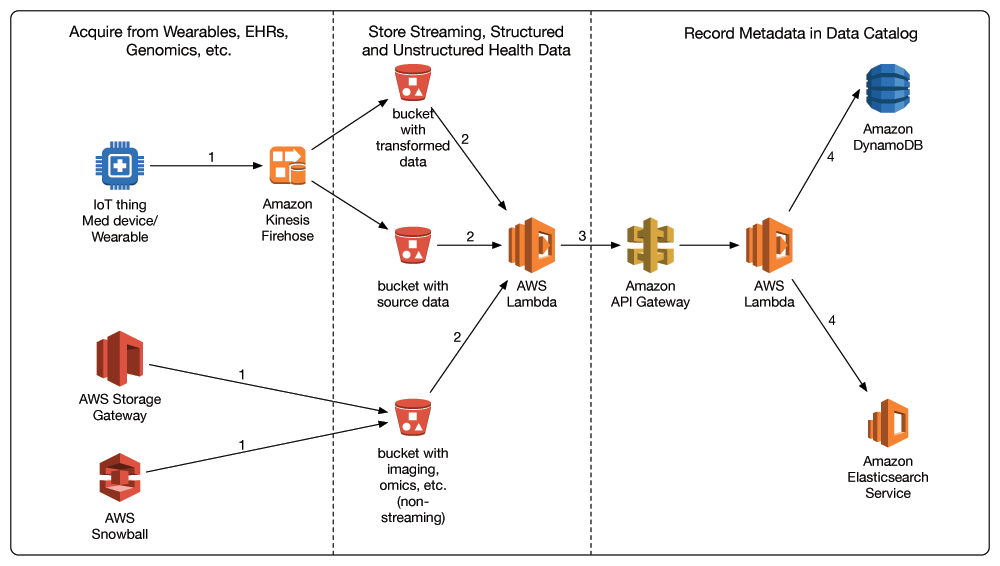 An architecture to store data from wearables in a data lake (source: Amazon)
An architecture to store data from wearables in a data lake (source: Amazon)According to Microsoft, time-series databases help to capture and process data in real time. Using time stamps, these databases organize information in a chronological order. This includes data from wearables for wellness monitoring (such as cardiovascular screening). So, it is possible to compare current (e.g., live electrocardiogram feeds) and historical data to detect anomalies, generate real-time alerts, perform predictive modeling, visualize trends, etc.
Another option to manage real-time data are NoSQL databases. One of the pros is a possibility to organize heterogenous data in flexible data structures that can be easily updated. NoSQL databases also come with scalability and performance to handle immense volumes of information without downtime.
In case training takes place in different locations, data consolidation in a cloud provides coaches with a single point of access to all the necessary information. For example, a Norwegian provider of sports-oriented hardware and software partnered with us to build a cloud platform that monitors and analyzes athlete physical performance. The system gathers and consolidates information from 13 types of smart devices distributed across multiple training locations. Based on this historical data, it is possible to analyze progress over time and develop data-driven training strategies.
Accuracy and false positives
When it comes to tracking sports performance, accuracy might not be a matter of life and death. However, when wearables are used to monitor biometric data and ensure athlete welfare, a high rate of false positives and negatives can lead to misdiagnoses. In this regard, research from the American College of Cardiology suggests that wearables have shown promise for cardiovascular disease screening of athletes. On the other hand, the same study highlights that similar tools are still far from perfect.
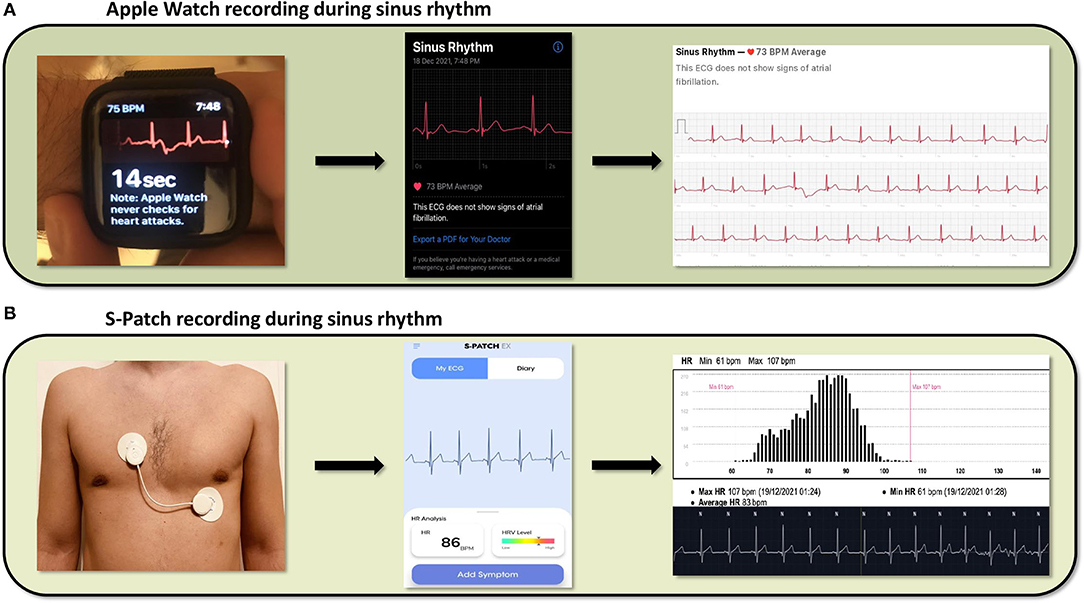 Smartwatch-based vs. patch-based cardiac monitoring (source: Frontiers)
Smartwatch-based vs. patch-based cardiac monitoring (source: Frontiers)Detecting anomalies (such as arrhythmia) that may be signs of health issues is an ideal scenario for ML systems. Algorithms should be trained with clinical data and learn to recognize recurring patterns or outliers. Microsoft recommends utilizing principal component analysis (PCA) as one of the approaches. This technique focuses on identifying the most common data points, namely what we would consider “normal,” based on a range of relevant features. Then, it uses distance metrics to spot outliers that deviate from these feature values and, therefore, represent anomalies.
In its turn, IBM suggests setting a threshold, which defines the minimum values, to consider deviations as actual anomalies and trigger a response. The trade-off, though, between true positives, false positives, and false negatives should be carefully weighed. Otherwise, the system may simply end up ignoring anomalous conditions.
Battery life
Ongoing monitoring of an athlete’s physical condition during training is an essential requirement of any wearable. While, in manufacturing, devices on stationary machinery can be easily recharged, sports requires a compromise between durability and portability.
As pointed out by Garmin, one of the leaders in device manufacturing, several features can impact battery life—including GPS tracking, establishing connection, and widgets. Some of these (such as Wi-Fi and Bluetooth) may be redundant and worth switching off to minimize battery drain, but that’s not always possible depending on the activity.
A viable option to mitigate such cons is to reduce the energy consumption of wearable devices via low-power communication techniques and protocols. Microsoft suggests relying on the Bluetooth Low Energy protocol, LPWAN, and LoRaWAN, which are optimized for low-power consumption.
Security and regulatory compliance
The growing sensitivity toward data protection has led to the proliferation of standards and regulations, including the GDPR and HIPAA. Legislation on this matter may limit the use of data in sports, especially when wearables are integrated into electronic health records, as Deloitte pointed out (October 2022).
This tension might be further amplified due to the exploitation of athlete information by private organizations. For example, the technology company Genius Sports has signed an agreement with the Mid-American Conference, acquiring the rights to manage sports data and sell it to betting companies. Some of the athletes may not be fine with that.
Finding a trade-off between algorithms’ infamous data hunger and protection will be a matter of study for the years to come. Meanwhile, sports companies should adopt solutions built in full compliance with the data management legislation applicable to the industry. In the European Union, the GDPR defines requirements around collecting, storing, and processing personal data. For example, it established the minimization principle, which limits the use of data based on relevance and necessity. Companies should implement policies to disclose how personal information is gathered and processed (including the storage of cookies). At the same time, users should be able to provide or withdraw their explicit consent and apply their right to be forgotten.
Furthermore, any data analytics platform and related devices must be equipped with security features against data leaks or cyberthreats. After all, any attack against a vulnerable point may disrupt the network as a whole, due to the interconnected nature of wearable devices in sports. To address that, Amazon lists measures such as security keys for data encryption and access to resources based on the least privilege principle. In its turn, Deloitte recommends implementing security information and event management for analytics and reporting, intrusion prevention and detection, risk identification, etc. You can also rely on cloud-based tools for security governance, such as AWS Control Tower or Azure Active Directory.
A technology-driven, more accessible play
Despite the advantages and disadvantages of the wearable technologies, they appear to be influencing, if not completely reshaping, the sports industry. This is evident from device usage to improve performance results of individual athletes to developing strategies for the whole team.
For instance, a tech company Mojo Vision partnered with Adidas and some other fitness brands to integrate proprietary data-tracking eye lens into consumer products. The technology allows to overlay fitness performance data and graphics powered by augmented reality without obstructing vision. This can be useful for athletes and amateurs preparing for marathons. In this regard, Adidas is contemplating adding such a feature to its Runtastic apps.
Another wearable-related trend to keep an eye on is inclusivity. For example, CNN revealed that French paratriathlete Charles-Edouard Catherinee relied on the vibratory feedback from a GPS device by Wayband to run independently. Wider access to sports may be a solid counterargument in the current debates over the use of technology in this industry.
That said, research is ongoing to ensure that wearables level up in helping athletes to monitor their physical condition, prevent injuries, improve performance, and reach new heights.
Subscribe to new posts
Contact us and get a quote within 24 hours










